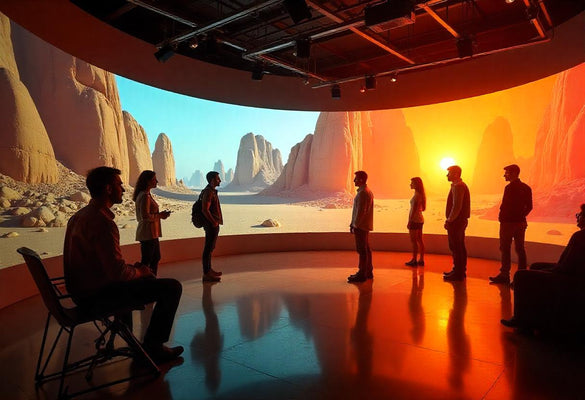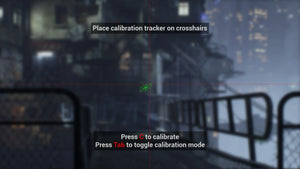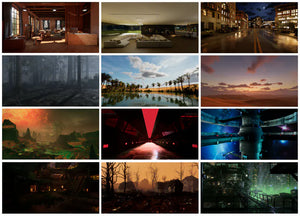Solving Film Production Challenges: How CAVE Technology Reduces Costs and Time

The film industry faces mounting pressures to create spectacular visual content while controlling budgets and meeting tight deadlines. Traditional film production methods often result in cost overruns, scheduling delays, and creative limitations that can make or break a project's success. Enter CAVE technology – a revolutionary solution that addresses these persistent film production challenges head-on.
Modern filmmakers struggle with expensive location shoots, complex set construction, unpredictable weather conditions, and the astronomical costs of reshoots. These challenges have plagued the industry for decades, forcing producers to choose between creative vision and financial reality. CAVE systems offer a transformative approach that eliminates many of these obstacles while opening new creative possibilities.
The Reality of Film Production Challenges
Film production challenges have intensified as audience expectations for visual quality continue to rise while studio budgets face increasing scrutiny. The traditional filmmaking process involves numerous costly variables that can derail even the most carefully planned productions.
Location and Set Construction Costs Physical location shoots represent one of the largest expense categories in film production. Travel costs, equipment transportation, crew accommodation, and location fees can consume 30-40% of a production budget. Weather delays, permit complications, and logistical challenges often extend shooting schedules by weeks or months, multiplying these costs exponentially.
Set construction presents another major financial burden. Building elaborate sets requires skilled craftspeople, expensive materials, and significant time investments. Once filming concludes, these expensive sets are typically demolished, representing a complete loss of investment. The process becomes even more costly when sets need modifications or when reshoots require reconstruction.
Time Management and Scheduling Conflicts Coordinating schedules among A-list actors, technical crews, and equipment availability creates complex logistical puzzles. Weather-dependent shoots can cause cascading delays that affect entire production timelines. Each day of delay costs productions thousands of dollars in crew wages, equipment rental, and facility costs.
The iterative nature of creative decision-making often requires multiple takes, angles, and versions of scenes. Traditional methods make it difficult to visualize creative choices before committing to expensive filming, leading to costly revisions during post-production or expensive reshoots.
Creative Limitations and Technical Constraints Physical sets and locations impose inherent limitations on camera angles, lighting options, and creative flexibility. Directors must work within the constraints of available space, existing architecture, and practical lighting conditions. These limitations can compromise creative vision and require expensive workarounds or additional shooting days.
How CAVE Technology Transforms Film Production
CAVE systems address these fundamental film production challenges by creating virtual environments that offer complete creative control while dramatically reducing traditional production costs and timeframes.
Virtual Location Shooting CAVE technology eliminates the need for expensive location shoots by creating photorealistic virtual environments that can represent any location on Earth – or beyond. Production teams can film in exotic locations, historical settings, or fantastical worlds without leaving the studio. This virtual production approach removes weather dependencies, travel costs, and location permit complications.
The technology allows directors to modify virtual locations instantly during filming. If a scene requires different lighting, weather conditions, or architectural elements, these changes can be implemented in real-time without construction delays or location changes. This flexibility ensures that creative decisions can be made based on artistic merit rather than logistical constraints.
Real-Time Set Design and Modification CAVE systems enable production designers to create and modify sets in real-time during filming. Complex architectural elements, furniture arrangements, and environmental details can be adjusted instantly based on creative feedback. This capability eliminates the time and expense associated with physical set construction while providing unlimited creative possibilities.
The collaborative nature of CAVE environments allows directors, cinematographers, and production designers to work together in the same virtual space, making creative decisions collectively. This real-time collaboration reduces the need for multiple meetings, concept revisions, and approval cycles that typically extend pre-production timelines.
Streamlined Pre-Visualization and Planning CAVE technology transforms the pre-visualization process by allowing creative teams to experience scenes before filming begins. Directors can walk through virtual sets, test camera angles, and refine blocking with actors in the same immersive environment. This comprehensive planning reduces on-set decision-making time and minimizes the need for expensive reshoots.
The technology captures detailed data about creative decisions, camera movements, and lighting setups during pre-visualization sessions. This information translates directly to traditional filming setups, reducing setup time and ensuring that creative vision is maintained throughout the production process.

Quantifiable Cost Reduction Benefits
CAVE technology delivers measurable cost savings across multiple production categories, making it an attractive investment for budget-conscious studios and independent filmmakers alike.
Location and Travel Savings Virtual production eliminates location-related expenses that typically account for 25-40% of production budgets. Travel costs, accommodation expenses, location fees, and equipment transportation are eliminated when filming occurs in virtual environments. Productions can represent multiple locations within a single CAVE facility, further multiplying these savings.
Weather-related delays, which cost the industry millions annually, become irrelevant in virtual environments. Productions maintain consistent schedules regardless of external weather conditions, eliminating costly weather days and associated crew standby expenses.
Set Construction and Materials Physical set construction costs are dramatically reduced or eliminated when using CAVE technology. The materials, labor, and time required for traditional set building are replaced by digital asset creation, which can be reused across multiple projects. Virtual sets can be modified, expanded, or completely redesigned without material costs or construction delays.
The reusability of virtual assets provides ongoing value that extends beyond individual productions. Digital environments, props, and architectural elements can be repurposed for sequels, spin-offs, or entirely different projects, maximizing the return on creative investments.
Time Efficiency and Scheduling Optimization CAVE systems reduce production timelines by eliminating many traditional bottlenecks. Pre-visualization in virtual environments allows creative teams to resolve potential issues before filming begins, reducing on-set decision-making time. Real-time collaboration capabilities eliminate the need for multiple approval cycles and revision rounds.
The technology enables more efficient shooting schedules by allowing multiple scenes to be filmed in the same virtual space with different environmental settings. This flexibility reduces the need for multiple location moves and setup changes that typically consume significant production time.
Production Time Savings Across Workflows
CAVE technology optimizes production workflows by reducing time-consuming processes and enabling parallel work streams that are impossible with traditional methods.
Accelerated Pre-Production Virtual environments enable faster concept development and approval processes. Stakeholders can experience proposed sets and locations in immersive detail, leading to quicker decision-making and fewer revision cycles. This acceleration can reduce pre-production timelines by 30-50% compared to traditional methods.
The ability to test and refine creative decisions in virtual environments before committing to expensive physical production reduces the risk of costly changes during filming. Creative teams can iterate rapidly on designs, lighting, and blocking without the time and expense associated with physical modifications.
Efficient Principal Photography CAVE systems enable more efficient filming schedules by eliminating many traditional setup and breakdown procedures. Virtual environments can be changed instantly between takes, allowing multiple scenes to be filmed in rapid succession. This efficiency can increase daily shooting productivity by 25-40% compared to traditional methods.
The technology's real-time collaboration capabilities allow multiple departments to work simultaneously in the same virtual space. While cinematographers test lighting setups, production designers can modify environmental elements, and directors can work with actors on blocking, creating parallel workflows that maximize time efficiency.
Streamlined Post-Production Integration CAVE technology captures comprehensive data about virtual environments, camera movements, and lighting setups during filming. This information integrates seamlessly with post-production workflows, reducing the time required for visual effects integration and color correction. The precise data eliminates guesswork in post-production, leading to faster turnaround times and more accurate final results.

Filmmaking Cost Optimization Strategies
CAVE technology enables strategic cost optimization approaches that benefit productions of all sizes, from independent films to major studio blockbusters.
Scalable Production Models CAVE systems offer scalable solutions that can be tailored to specific budget requirements. Independent filmmakers can access CAVE facilities through rental arrangements, while major studios can invest in dedicated installations. This scalability makes virtual production benefits accessible across the entire spectrum of film production budgets.
The technology's flexibility allows productions to optimize resource allocation by focusing spending on creative elements rather than logistical overhead. Budgets previously dedicated to location travel and set construction can be redirected toward talent, visual effects, or marketing initiatives that directly impact audience engagement.
Resource Sharing and Efficiency CAVE facilities can serve multiple productions simultaneously, sharing infrastructure costs across projects. This shared resource model reduces individual production costs while maximizing facility utilization. Studios can optimize their investment by using CAVE systems for multiple projects throughout the year.
The reusability of virtual assets across projects creates ongoing value that extends beyond individual productions. Digital environments, character models, and prop libraries can be shared among projects, reducing creative development costs and accelerating production timelines.
Risk Mitigation and Insurance Benefits Virtual production reduces many traditional production risks, potentially lowering insurance costs and eliminating expensive contingency requirements. Weather delays, location access issues, and equipment damage risks are significantly reduced in controlled virtual environments. This risk reduction can result in lower insurance premiums and reduced contingency budget requirements.
Industry Success Stories and ROI Examples
Leading production companies have achieved remarkable cost savings and efficiency gains through CAVE technology implementation, demonstrating the practical benefits of virtual production approaches.
Major Studio Implementations Several major studios have reported 20-30% cost reductions on productions utilizing CAVE technology for virtual production. These savings result from eliminated location costs, reduced shooting schedules, and fewer post-production complications. The technology has enabled productions to achieve creative visions that would have been financially impossible using traditional methods.
Studios have also reported improved creative satisfaction and reduced stress levels among creative teams. The ability to visualize and refine creative decisions before committing to expensive filming has led to higher-quality results and greater creative confidence throughout the production process.
Independent Film Success Independent filmmakers have leveraged CAVE technology to create visually spectacular content on limited budgets. Projects that would have required millions in location and set construction costs have been completed for fractions of traditional budgets while maintaining high production values.
The technology has enabled independent filmmakers to compete with major studio productions in terms of visual quality and creative scope. This democratization of high-end production capabilities has led to more diverse and innovative content in the film industry.

Future Implications for Film Production
CAVE technology represents a fundamental shift toward more efficient, creative, and cost-effective film production methods. As the technology continues to evolve, its impact on production workflows and industry standards will likely expand significantly.
Technological Advancement Ongoing improvements in CAVE system capabilities, including higher resolution displays, more sophisticated tracking systems, and enhanced haptic feedback, will further increase the technology's effectiveness. These advancements will make virtual production even more compelling compared to traditional methods.
The integration of artificial intelligence and machine learning capabilities will enable more intelligent virtual environments that can adapt to creative needs in real-time. These smart systems will further optimize production workflows and reduce the technical expertise required to operate CAVE systems effectively.
Industry Adoption As more productions demonstrate successful CAVE implementations, industry adoption will likely accelerate. The competitive advantages provided by virtual production will drive widespread adoption across all production scales, from independent films to major studio blockbusters.
Educational institutions are beginning to integrate CAVE technology into film production curricula, ensuring that future filmmakers are prepared to leverage these capabilities. This educational foundation will support continued industry growth and innovation in virtual production techniques.
Conclusion
CAVE technology addresses the most persistent film production challenges by providing creative solutions that reduce costs, save time, and eliminate traditional production constraints. The technology's ability to create immersive virtual environments enables filmmakers to achieve their creative vision without the logistical and financial barriers that have historically limited the industry.
The quantifiable benefits of CAVE implementation – including significant cost reductions, accelerated production timelines, and enhanced creative flexibility – make it an essential tool for modern film production. As the technology continues to evolve and become more accessible, its impact on the film industry will likely expand, creating new possibilities for storytelling and visual expression.
Productions that embrace CAVE technology gain competitive advantages in budget management, creative capabilities, and production efficiency. These benefits position virtual production as a strategic necessity rather than a luxury, fundamentally changing how films are conceived, planned, and executed in the modern entertainment landscape.
Frequently Asked Questions
Q: How much can CAVE technology reduce film production costs?
A: Productions typically see 20-40% cost reductions when implementing CAVE technology, primarily through eliminated location expenses, reduced set construction costs, and accelerated production timelines. The exact savings depend on the project's scope and traditional production requirements.
Q: What types of films benefit most from CAVE technology?
A: Films requiring multiple locations, complex sets, or fantastical environments see the greatest benefits. However, even dialogue-driven productions can benefit from reduced location costs and enhanced creative control over environmental elements.
Q: How long does it take to set up a CAVE system for production?
A: Modern CAVE systems can be configured for specific productions within days rather than weeks. The digital nature of virtual environments eliminates traditional set construction timelines, allowing productions to begin filming much sooner.
Q: Can CAVE technology completely replace traditional filming methods?
A: While CAVE technology can handle many production requirements, it works best as part of a hybrid approach that combines virtual and traditional techniques. The optimal mix depends on the specific creative and logistical needs of each production.
Q: What training do production teams need to use CAVE systems effectively?
A: Most production teams can become proficient with CAVE technology within a few days of training. The systems are designed to be intuitive for filmmakers, with interfaces that translate familiar production concepts into virtual environments.
Q: How does CAVE technology affect post-production workflows?
A: CAVE systems actually streamline post-production by capturing precise data about virtual environments, lighting, and camera movements during filming. This information integrates seamlessly with editing and visual effects workflows, reducing post-production time and complexity.
Q: What are the ongoing costs of using CAVE technology?
A: Ongoing costs include facility rental or ownership, software licensing, and technical support. However, these costs are typically offset by savings in location fees, set construction, and reduced shooting schedules, resulting in net cost savings for most productions.
Q: Can independent filmmakers access CAVE technology?
A: Yes, many CAVE facilities offer rental options that make the technology accessible to independent filmmakers. These arrangements allow smaller productions to access high-end virtual production capabilities without major capital investments.




